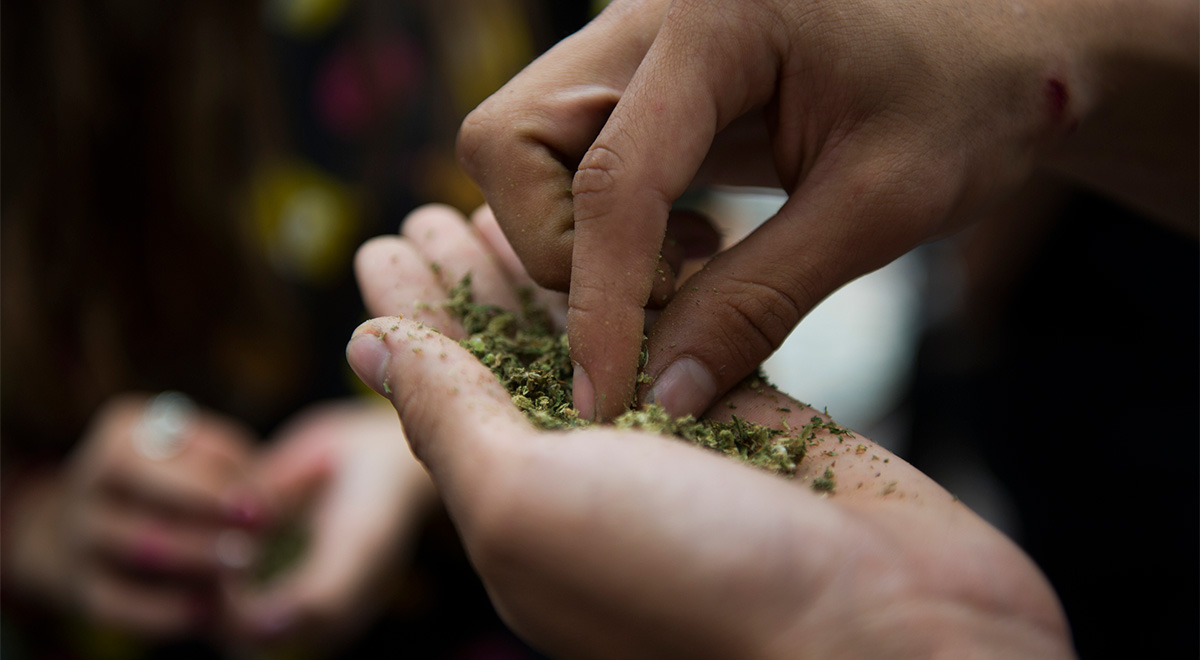Throughout the 2500-year long history of naturally-grown cannabis, there have no recorded cases of a person actually dying or suffering serious side effects from a marijuana overdose. The same, however, cannot be said for its artificially-created counterpart. Between 2010 and 2015, physicians across the country reported treating a total of 456 patients for synthetic cannabis overdose. In July of 2017, one county in Pennsylvania saw 102 cases of synthetic cannabis poisoning within a three-day period.
Synthetic cannabis, also known as “K2” or “Spice” (after two particular brand names under which it has been sold) is a product manufactured from dried, ground-up plant material and sprayed with psychoactive chemicals that supposedly mimic the effects of THC, the substance that binds to cannabinoid receptors in the brain. It was introduced in 2004 as a “designer drug” by manufacturers attempting to bypass marijuana laws. For many years, synthetic marijuana has been easily and legally available at convenience stores and tobacco shops. Another appeal is that the ingredients typically do not show up in drug tests.
Over the years, buyers have been led to believe that the “natural” herbal ingredients were what produced the “high.” This is not the case; there are actually a number of different chemicals that mimic the effects of THC, many of which are used in the manufacture of synthetic cannabis. However, unlike naturally-grown cannabis, the effects can be dangerous – and even deadly.
The primary difference between natural THC and its synthetic counterparts is one of degree. Naturally, occurring THC is what neuroscientists classify as a “partial agonist.” This means that it does not completely bind to the receptors within brain cells. Synthetic THC is a “full agonist,” which completely binds to receptors. Furthermore, it can be up to 200 times as powerful as natural THC. Synthetic cannabis is made from several different chemical substances, all of which have different – and unpredictable – effects.
According to emergency physician Dr. Patrick Lank of the Feinberg School of Medicine, these effects can include seizures, cardiac arrest, and kidney failure. Speaking to CNN about problems in the Chicago area, he said, “We don’t know if the supply of synthetic cannabinoids…have been tainted by someone with rat poison, or if this is potentially a new side effect of a new synthetic cannabinoid.” Another emergency medicine specialist from New York, Dr. Robert Glatter, compares the use of synthetic cannabis to “playing a game of Russian roulette.” In a news interview, he noted that patients “become very aggressive and violent in the ER and often require chemical (sedation) if not physical restraint” – something that does not happen with natural cannabis.
Originally, synthetic cannabinoids were developed for research purposes, since federal drug regulations made it difficult for scientists to carry out studies on marijuana. However, “rogue” chemists, seeing a lucrative business opportunity, have not hesitated to take advantage of the lack of regulation, despite the unknown dangers. As a result, the number of medical emergencies and calls to poison control centers due to synthetic marijuana overdose has been increasing exponentially.
The federal government has been behind the curve on this issue; the Drug Enforcement Agency finally designated five specific chemicals used in the production of synthetic cannabis as Schedule I substances in March of 2011. The problem is that manufacturers continually change the formula in order to stay ahead of the law. For those living in states that have yet to legalize marijuana either for medical or recreational purposes, the easy availability of synthetic cannabis may make it a tempting alternative. For many reasons, it is not a good alternative – and should be avoided at all costs.

